If other treatment methods have been unsuccessful, surgery may be an option to relieve your knee pain. There are various surgical options available, all intended to help restore your mobility, alleviate your pain, and improve your quality of life. Talk to your surgeon about what may be right for you.
Arthroscopy
Often the first surgical treatment for knee osteoarthritis is arthroscopy, a procedure used to see, diagnose, and treat problems inside the joint. Arthroscopy typically involves inserting a small camera into the knee and then treating identifiable problems. Some of the more common procedures performed during arthroscopy include:
- Trimming damaged cartilage
- Removing loose debris within the knee
- Irrigating the inside of the knee
- Repairing defective joint cartilage with a graft
- Removing/repairing a torn meniscus (cartilage) or reconstructing a damaged ligament
Osteotomy
Arthritis can cause the cartilage in your knee to wear unevenly, which may cause your knee to bend slightly inward or outward. By adding or removing bone from the diseased portion of the thighbone (femur) or shinbone (tibia), doctors are able to adjust the alignment and rebalance the amount of stress the diseased portion of your knee receives.
Partial knee replacement
During both partial and total knee replacement surgeries, the bone surfaces and cartilage that have been damaged are removed and replaced with artificial surfaces (implants) made of metal and polyethylene.
Sometimes, osteoarthritis only occurs in one area of the knee. In these cases, your doctor may consider a procedure that preserves the healthy portions of your knee. This is called a partial knee replacement. In a partial knee replacement, only one part (the diseased portion) of the joint is resurfaced, leaving the healthy portions untouched.
A successful partial knee replacement can relieve pain and preserve more of your natural anatomy. It may delay, and, in some cases, prevent a more extensive total knee replacement, which replaces all three compartments of the knee.
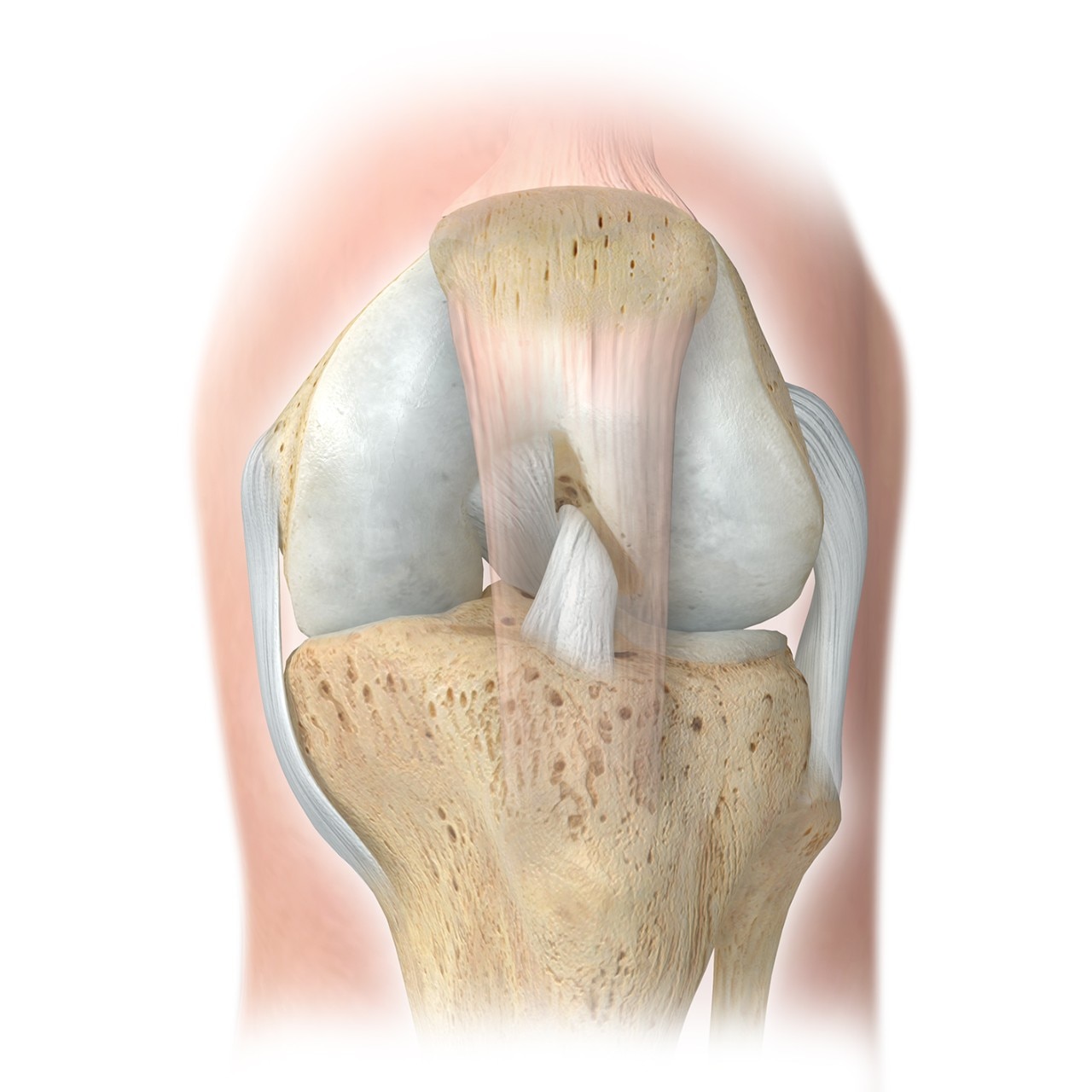 Healthy Knee
Healthy Knee
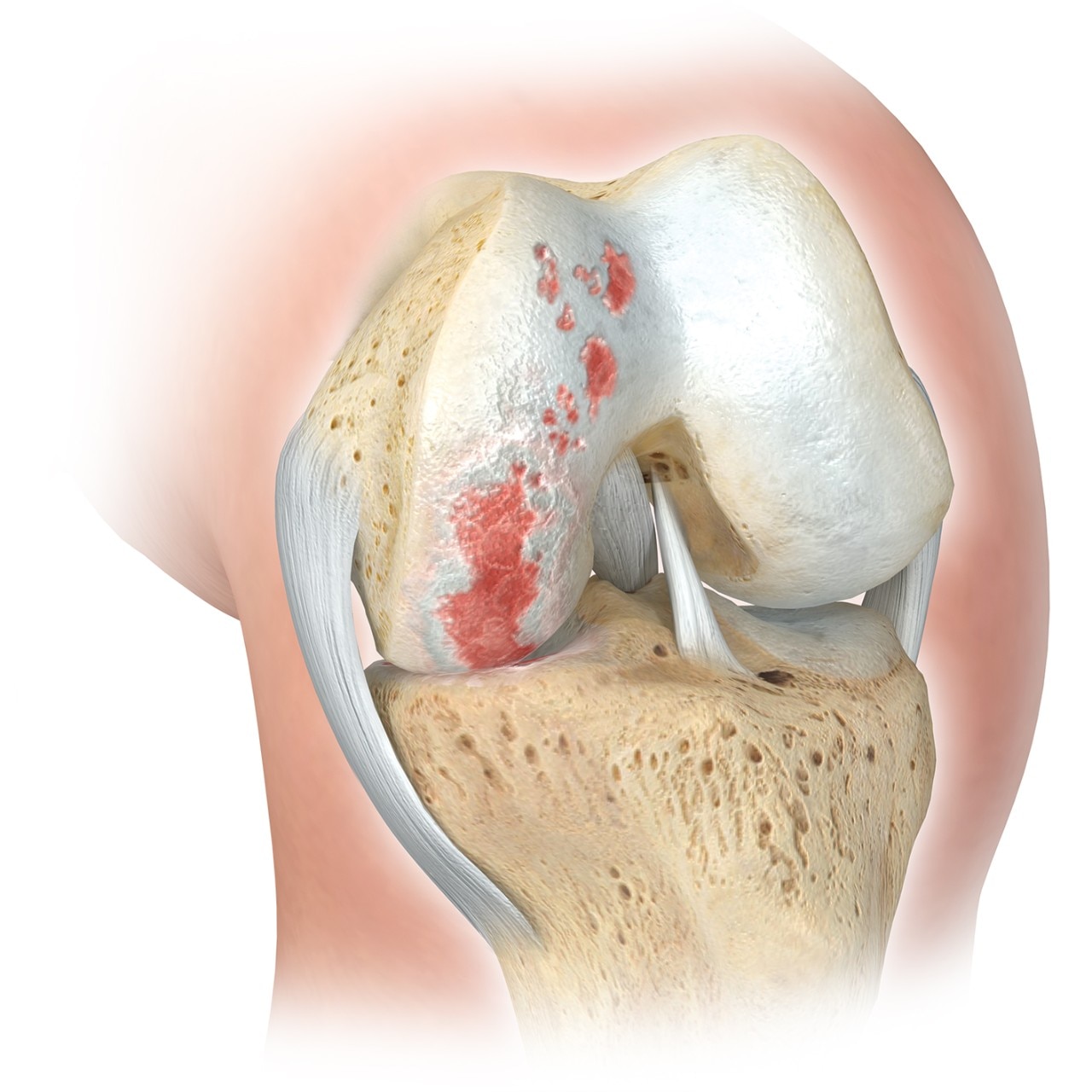 Partial Knee Damage
Partial Knee Damage
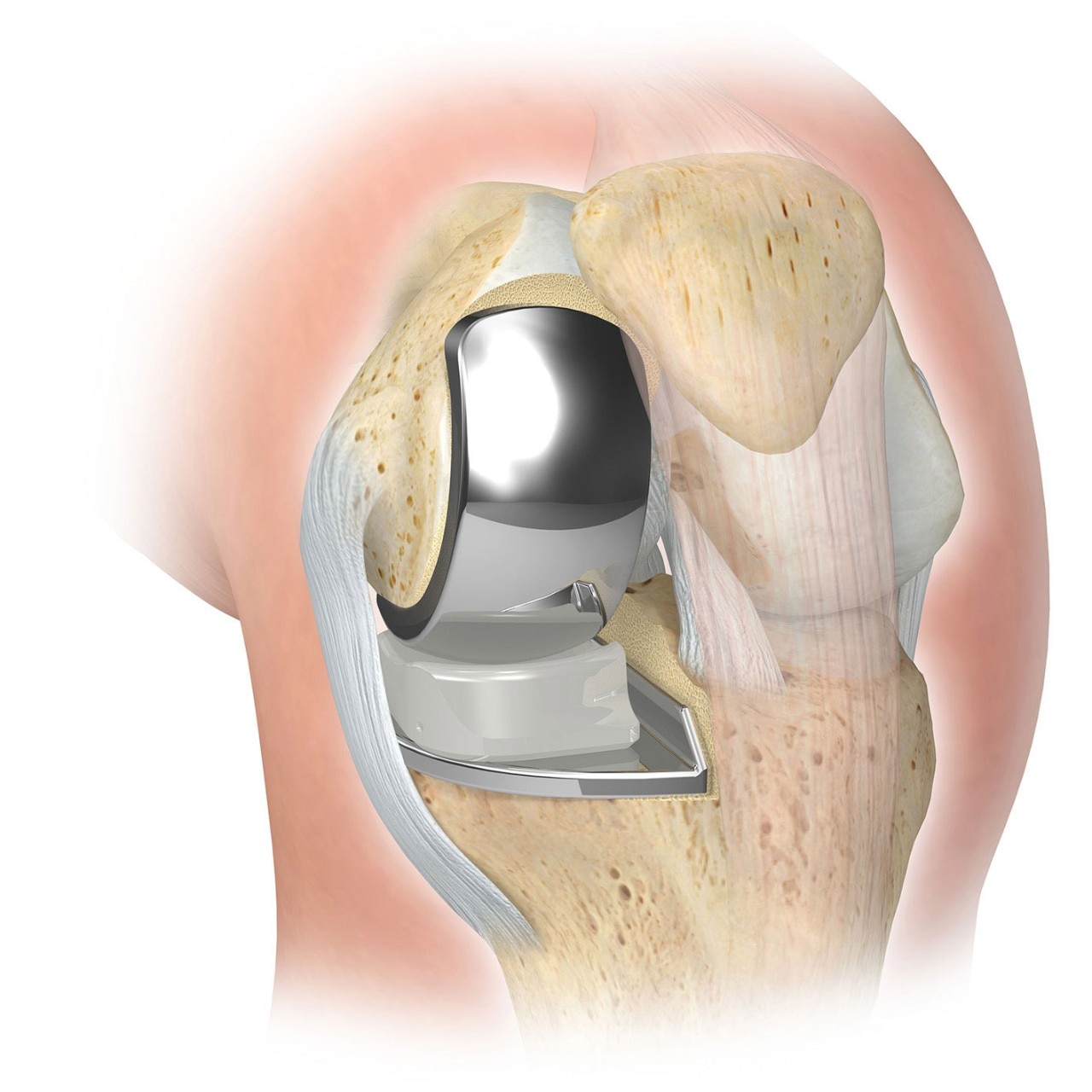 Partial knee replacement
Partial knee replacement
Understanding treatments for knee pain
To learn more about knee pain treatment options, click here.
Patellofemoral knee replacement
If you experience pain under the kneecap (patella), your surgeon may recommend another type of partial knee replacement called patellofemoral knee replacement. This procedure replaces just the diseased portion of the kneecap, while preserving the undamaged portion of your femur and tibia.
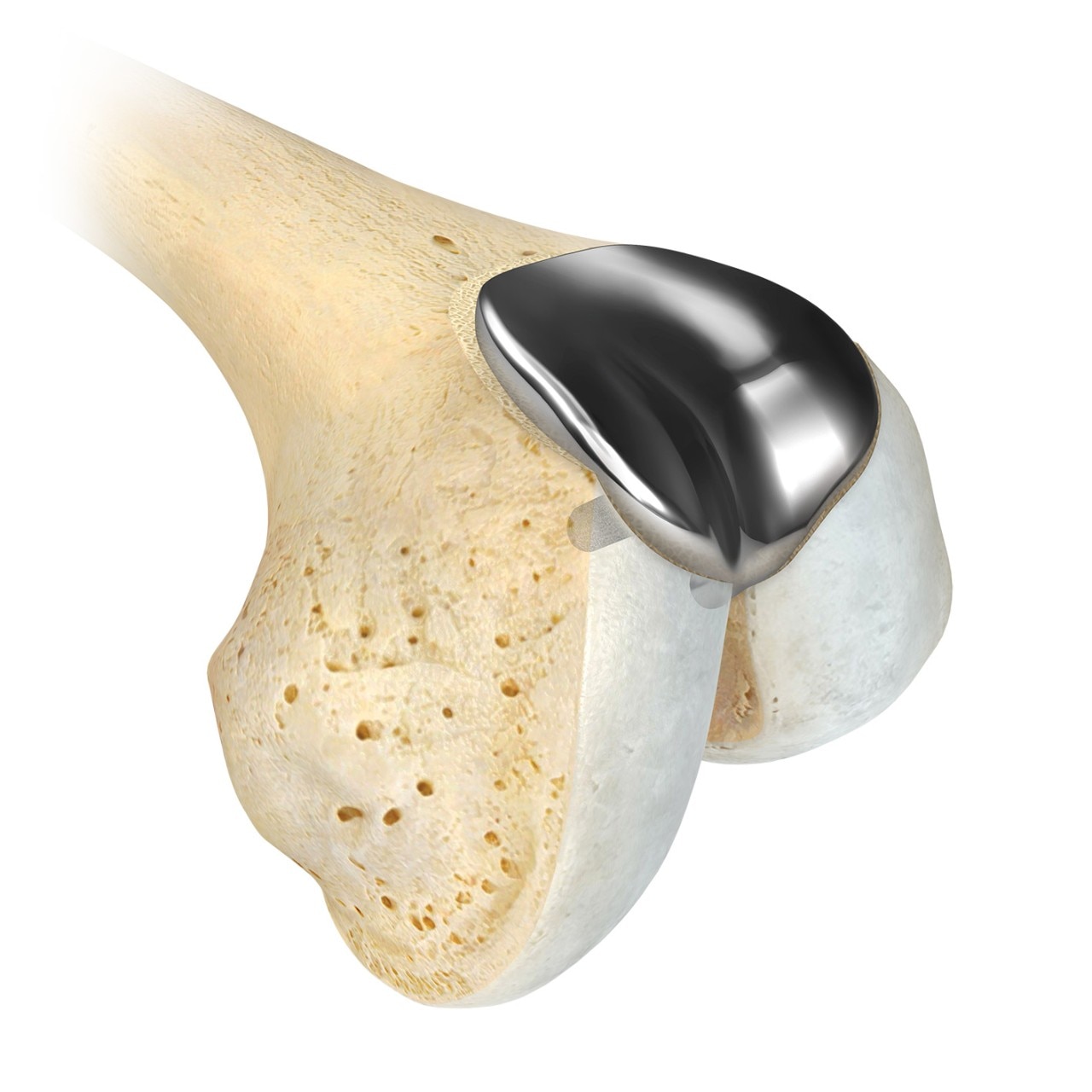
Total knee replacement
A total knee replacement is considered when the surfaces of the thighbone, shinbone, and underside of the kneecap (patella) are significantly damaged. During total knee replacement surgery, the surface of the thighbone is replaced with a contoured metal component designed to fit the curve of your bone. The surface of the shinbone is also replaced with a flat metal component. Then, a smooth polyethylene implant that acts as cartilage is inserted between the two metal implants. The undersurface of the kneecap may also be replaced with an implant made of plastic, or a combination of metal and plastic.
A US National Institutes of Health (NIH) study concluded that total knee replacement is extremely successful, resulting in "rapid and substantial improvement in the patient's pain, functional status, and overall health-related quality of life in about 90% of patients."1 More than 250,000 people a year undergo the procedure in the United States alone.
 Healthy Knee
Healthy Knee
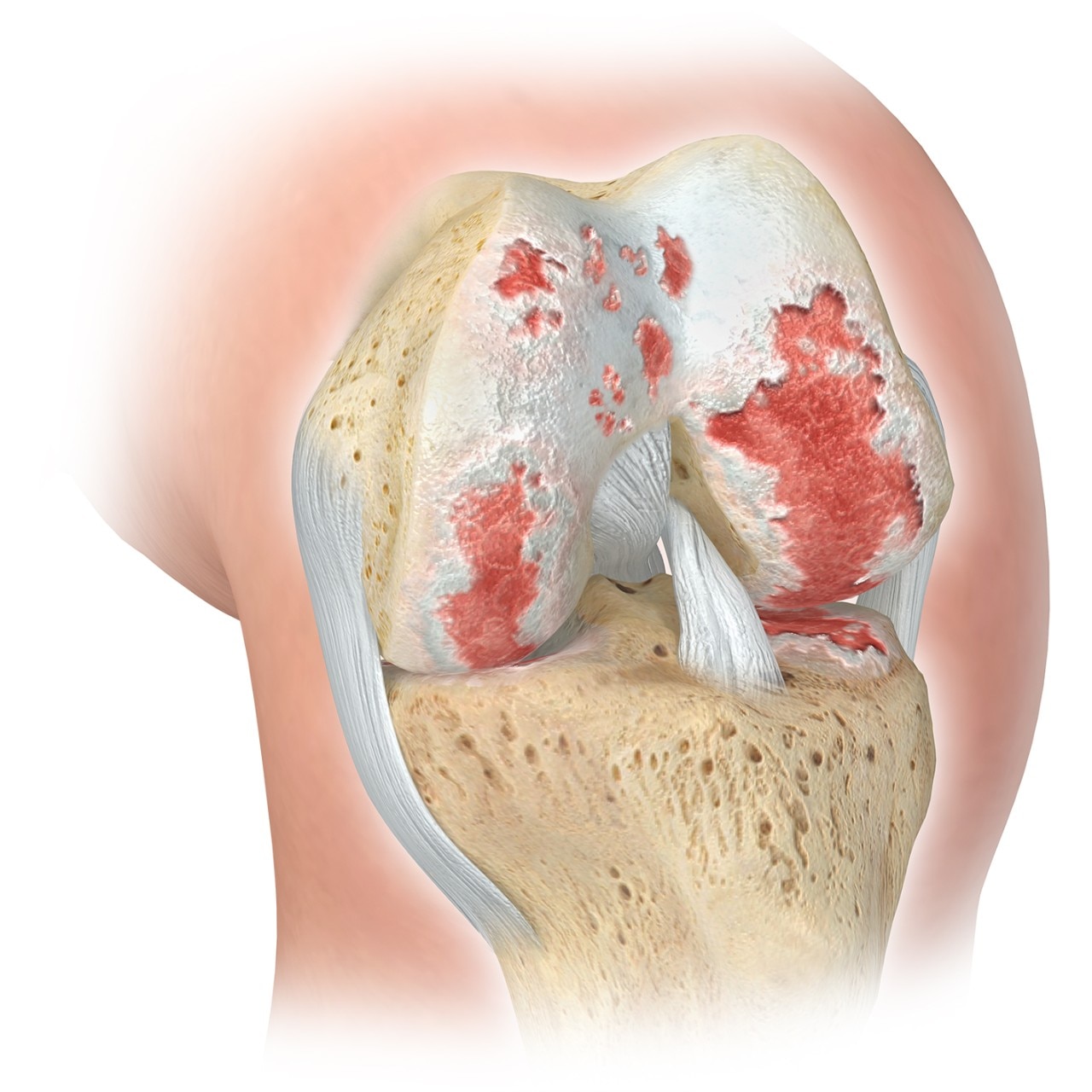 Diseased Knee
Diseased Knee
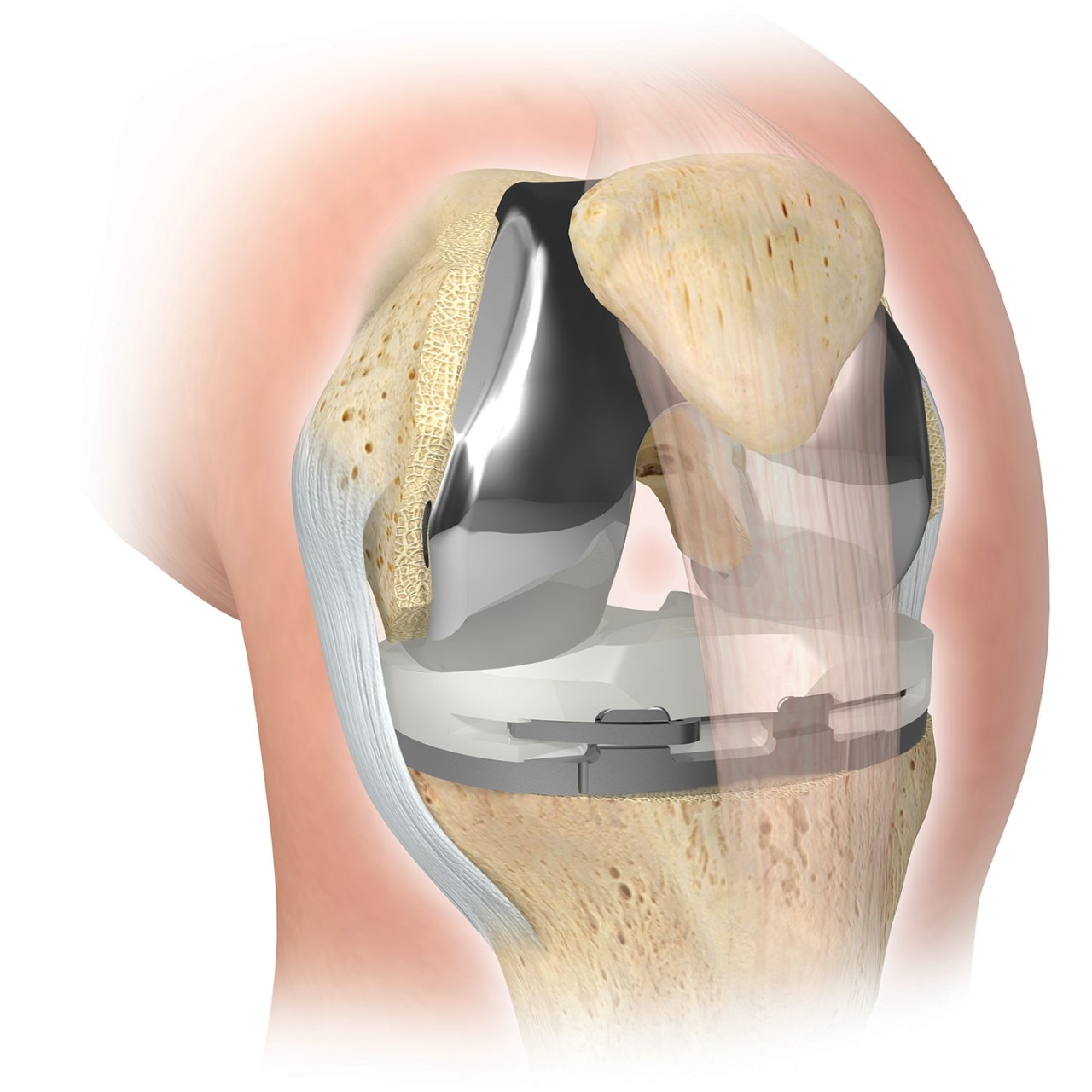 Total knee replacement
Total knee replacement
The prospect of having any of the treatments listed above can be a lot to handle. Be open with your doctor about how you are feeling. As with many procedures, there are risks associated with joint replacement as you can see below. Together, you and your surgeon can discuss these risks and figure out a treatment path that feels right for you.
Risks of joint replacement
Some of the risks associated with joint replacement include infection, wear, implant or bone fracture, loosening, nerve damage and implant migration (movement); some patients continue to experience some pain after joint replacement. Individual results of joint surgery will vary. Your results will depend on your personal circumstances. How long a knee replacement will last varies from patient to patient. It depends on many factors, such as the patient's physical condition, activity level, and body weight and how well you follow doctor’s orders. Replacement joints are not as strong or durable as natural, healthy joints, and there is no guarantee that a prosthetic joint will last the rest of a patient's life. All knee replacements may need to be replaced at some point. Talk to your surgeon about these and other risks associated with joint replacement. To learn more about the risks of knee replacement surgery, click here.
References
- NIH Consensus Statement on total knee replacement (2003, Dec 8-10). NIH Consens State Sci Statements. 20(1): 1-34.




